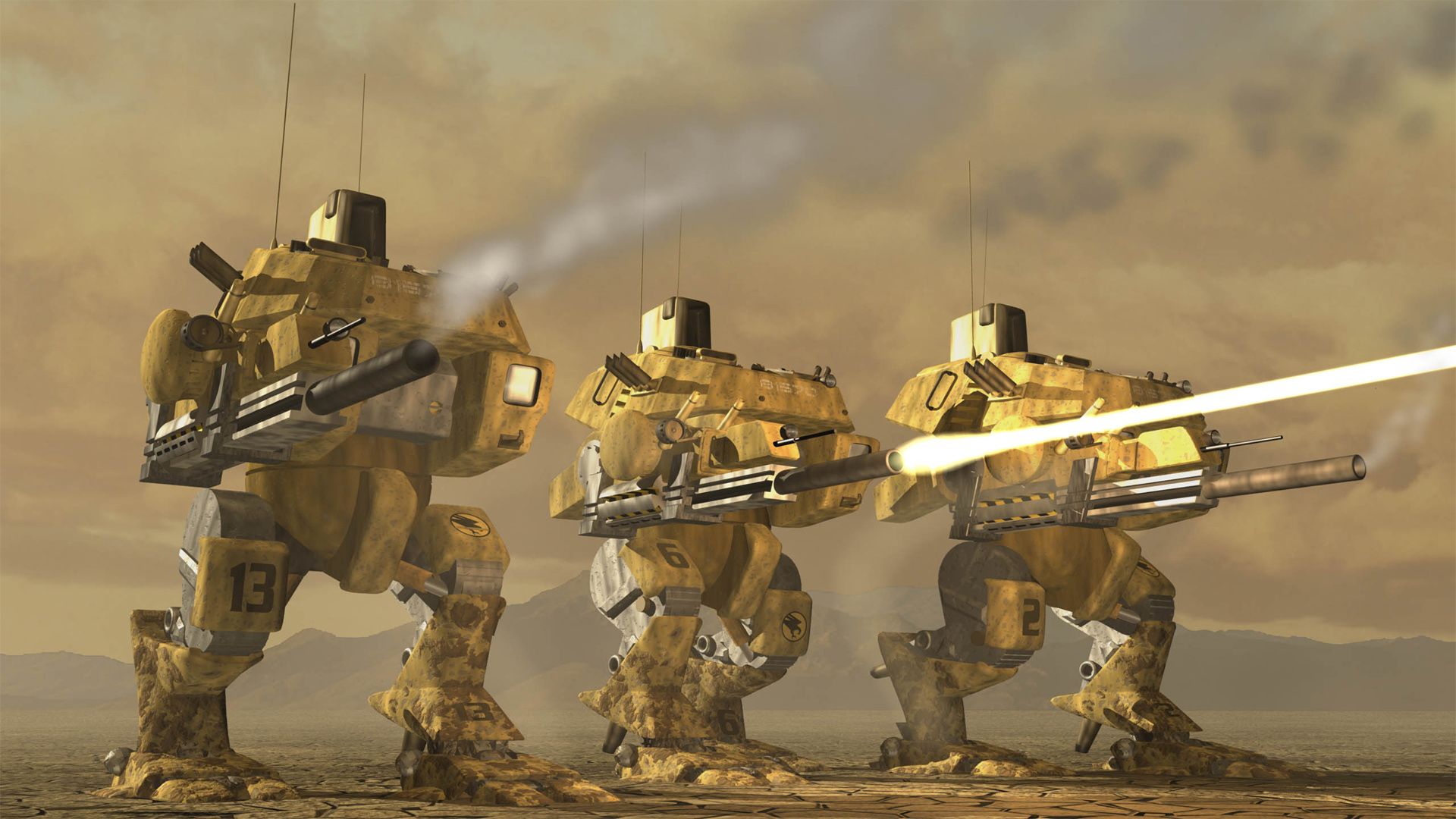Revisiting Command & Conquer Tiberian Sun
A compelling 1999 real-time strategy game with unconventional warfare in a gritty apocalypse

Command and Conquer set the RTS (real-time strategy) genre on fire when it first came out, introducing mechanics that paved the way for contemporaries to dive in. This meant that its sequel had a lot of hopes riding on its shoulders. Westwood’s Tiberian Sun didn’t introduce groundbreaking changes, rather it took an iterative approach. From vibrant destructible terrain to novel additions to the repertoire of interwoven systems that its predecessor pioneered, it did justice to its past, and then some. It had a lot at stake, but the return of the tireless tussle between the Global Defense Initiative and the Brotherhood of Nod was anything but predictable. While it had its fair share of bugs and issues at launch, a landslide of patches fixed most of them.
The game feels and plays much like its precursor, making it instantly familiar to longtime Command and Conquer veterans. But things have changed. Night-and-day cycles, dynamic lighting, and eerie weather effects all lend the game a sense of weight that its predecessor lacked. The fact that every C&C game after Tiberian Sun adopted all of these features is a testament to their success. But realistic topography and advanced lighting merely scratch the war-torn surface.
Jungles of concrete and Tiberium
Tiberian Sun throws a dizzying array of locations at you to engage in conflict. Tiberium, a valuable resource, has corrupted the landscape, causing blizzards and nuclear deserts to pop up across the planet. This very fuel is extracted by both the GDI and Nod’s forces to power their armies, perpetuating the deadly spiral into an impending ecological disaster. Explosives leave craters on surfaces and can even knock down bridges. Terrain plays a bigger role here than in the games that preceded it. But units from both sides of the conflict can use this to their advantage. From amphibious and airborne units to those that can traverse the plains via underground tunnels, the topography is merely an element that can sway the tides of dystopian wars.

Urban environments change things up a bit. Conceal your troops or raze civilian buildings to the ground to get the drop on your foes. Battles are often merciless, forcing you to employ tactics and counter-strategies to prevent an onslaught. Infantry units are still miniature animated sprites that make ants look like AT-AT walkers, but vehicles and other larger units are drawn using voxels, lending them a rough but appealing three-dimensional appearance. Not all of them look neat, the Devil’s Tongue looks more like a shoebox than a flame-belching tank. The special effects are bonkers, with robots coughing up realistic smoke and sparks as they take damage. Weakened Nod cyborgs crawling with only their upper bodies as they fight with their last ounce of strength is subtle but poignant nonetheless.
Tiberian Sun is unafraid of the fact that it is a science-fiction game. Even the puny infantry troops come equipped with pulse rifles and disc-shaped grenades. They won’t seem all that alien to longtime fans of the series since they’ve all been crafted with C&C tactics and strategies in mind. One particular hitch is that you cannot order your units to stand still as they attack, making them easy targets for ambushes if you aren’t too careful. While it does borrow sci-fi unit designs from competitors like Starcraft, Tiberian Sun’s units are a blast to control, with unique abilities and sensible pathfinding mechanics. While gunfire sounds are on point, the units’ combat dialogue tends to get long in the tooth. But the intense soundtrack comprised primarily of techno beats more than makes up for it.

Cataclysm
C&C Tiberian Sun’s campaign is split between the GDI and Nod sides, where the latter is treated as a what-if scenario. The game is eerily reminiscent of the strenuous international relations of the time. It harkens back to a time when the League of Nations considered the possibility of collective security. This UN-sanctioned force uses its superior technology to throw a terrorist cult (led by a madman of course) into disarray in order to secure energy reserves. Sounds familiar, doesn’t it?
Is the world a better place if the good guys win?
Tiberian Sun turns this very dream into a harrowing nightmare. The fuel Tiberium takes its toll on the planet and yet the GDI and the Brotherhood abuse its power to fuel their armies and wage their wars. It affects everything from the weather to the people it comes into contact with. Even your infantry units wear suits to protect themselves. As you make your way through the campaign, you do it with full knowledge of the damage you cause. The greater good, you say? Heck, the Brotherhood wants to accelerate this very process with a bomb. But is the GDI any less deluded?
Few stories remain with you long after the last mission. Tiberian Sun’s narrative is one of them.
The differences between the two sides are pronounced, something that not every RTS game can claim. GDI focuses on powerful but slow units while the Brotherhood’s solid defense systems and vulnerable but fleet-footed troops let them work with guile and deception. The former relies on powered armor suits more than tanks. GDI’s Wolverines are quick and lethal while the Mammoth Mk. II dishes out punishment with two railguns and anti-aircraft missiles. Nod’s forces work with subterranean tanks and can even cloak their entire base, a trick that helped me win many a skirmish. The mental gymnastics behind filling up the ammo of airborne units at helipads make them impractical for anything besides bombing runs.
There’s a third side too, one that breathes and thrives in Tiberium, but I’d rather have you experience it yourself.
Each side has units they need to rely on to have any semblance of success in military encounters. Cutting off enemy Tiberium harvesters is a tactic that both sides will seek to exploit. C&C rewards you for striking first but your opponent won’t sit idle as you flesh out your tech tree. This ruthless approach ensures that you’re on your toes in constant vigilance. You never know when a batch of subterranean tanks will emerge from the middle of your base.
While most scenarios on both sides of the conflict need a fair bit of trial-and-error before coming up with a strategy, their varied objectives keep things from going stale. The kill-everything-on-the-map idea is infuriating when a single unit is hidden behind the fog of war. Tiberian Sun’s big-budget full-motion-video sequences between levels look dated, but the live-action components wouldn’t look out of place in a sci-fi film.

Advanced warfare
When you’re done with the missions, the randomly generated maps of the skirmish mode are a breath of Tiberium-free air (Tiberium patches can damage your troops if you aren’t careful). Did I mention that the blue Tiberium patches are explosive? If you’re the kind who’d rather go up against human opponents, the multiplayer servers await. EA turned the game into freeware, which means that your friends can get in on the GDI vs Nod goodness at no cost.
Just watch out for invisible tanks. If you can.
Westwood ran into an interesting conundrum back in the day. They kicked off the genre but their peers seem to have taken over from them. While Tiberian Sun treads no new ground, its iterative updates ensure that it delivers an engaging narrative with well-defined gameplay. Its sequels took the mantle forward, but Tiberian Sun was a solid Tiberium-crusted stepping stone nonetheless. Over 20 years later, its intriguing mix of ecological disaster and futuristic warfare remains compelling.
Its plot went from outlandish to plausible in a few years. Give it time.
